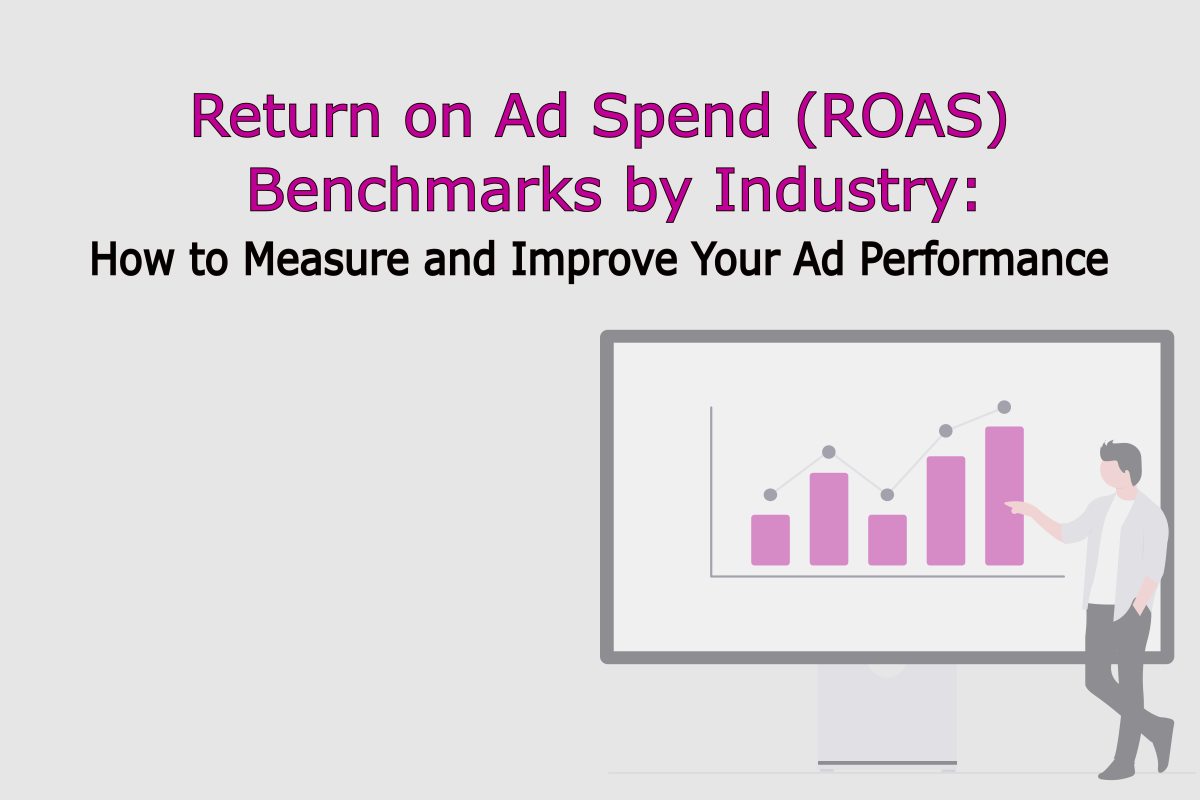
Average ROAS Range with Sources
| Industry | Average ROAS Range | Source |
|---|---|---|
| E-commerce (Retail) | 3.5x – 4.5x | WordStream, 2024 |
| Consumer Services | 4.0x – 5.0x | AdEspresso, 2023 |
| B2B (Lead Generation) | 5.0x – 6.5x | HubSpot, 2024 |
| Education | 3.0x – 4.0x | AdStage, 2023 |
| Finance / Insurance | 4.5x – 7.0x | WordStream, 2024 |
| Travel / Hospitality | 3.0x – 4.0x | AdEspresso, 2023 |
| Health & Wellness | 3.5x – 5.0x | HubSpot, 2024 |
| Technology / SaaS | 6.0x – 8.0x | SaaS Capital, 2024 |
| Real Estate | 2.5x – 4.0x | AdStage, 2023 |
Conversion Rate, CPA, and CTR
| Industry | Google Ads Avg Conv. Rate | Google Ads Avg CPA | Facebook Ads Avg CTR | Sources |
|---|---|---|---|---|
| E-commerce (Retail) | 2.81% | $45.27 | 1.59% | WordStream, Store Growers |
| B2B | 3.04% | $116.13 | 0.78% | WordStream |
| Consumer Services | 6.64% | $90.70 | 0.62% | WordStream |
| Education | 3.39% | $72.70 | 0.73% | WordStream |
| Finance / Insurance | 5.10% | $81.93 | 0.56% | WordStream |
| Real Estate | 2.47% | $116.61 | 0.99% | WordStream |
| Technology / SaaS | 2.92% | $133.52 | 1.04% | WordStream, Store Growers |
| Travel / Hospitality | 3.55% | $66.02 | 0.90% | WordStream |
Introduction
Return on Ad Spend (ROAS) measures how effectively your advertising investment generates revenue. It tells you how many dollars your business earns for every dollar spent on ads. But a raw ROAS number isn’t very useful without context.
Different industries have different benchmarks. What’s considered a strong ROAS in retail may be weak for SaaS. Without knowing industry standards, you can’t tell if your campaigns are performing well or falling short.
In this post, you’ll learn how to interpret ROAS benchmarks by industry, how to apply these benchmarks to your own campaigns, and strategies to improve your advertising returns.
What Is ROAS?
ROAS is calculated by dividing the revenue generated from ads by the ad spend:
ROAS = Revenue from Ads / Ad Spend
For example, a ROAS of 5 means you earn $5 for every $1 spent on advertising.
It’s important to understand that ROAS differs from related metrics like Return on Investment (ROI) and Cost per Acquisition (CPA). ROI measures profitability considering all costs, while CPA focuses on the cost to gain a customer. ROAS strictly measures the efficiency of your ad spend in generating revenue.
ROAS Benchmarks Vary Across Industries
ROAS benchmarks differ widely by industry. Factors influencing these variations include sales cycles, profit margins, and customer lifetime value.
- Retail & eCommerce: 4:1 to 8:1
- B2B Services: 3:1 to 5:1
- SaaS: 3:1 to 6:1
- Travel & Hospitality: 2:1 to 4:1
- Healthcare & Wellness: 3:1 to 7:1
These ranges come from aggregated data across advertisers on platforms like Google Ads and Facebook Ads. Use them as a directional guide rather than a strict rule.
How to Use ROAS Benchmarks Effectively
- Identify Your Industry: Find the industry category closest to your business. If your exact sector isn’t listed, choose a related one.
- Understand the Benchmark Values: Benchmarks usually represent average or median ROAS values. Some tables also include ranges or percentiles.
- Calculate Your ROAS: Measure your campaign’s ROAS and compare it to the benchmark.
- Interpret in Context: Seasonality, campaign type, and product mix affect ROAS. Don’t treat benchmarks as absolute standards.
- Set Realistic Goals: Use benchmarks to set achievable ROAS targets that align with your business context.
What Causes ROAS to Vary?
- Campaign Type: Search ads typically yield higher ROAS than display or video ads because they target users with purchase intent.
- Product Margins: Higher-margin products can be profitable with lower ROAS compared to low-margin goods.
- Seasonality: Industries like retail see fluctuating ROAS during holidays or peak seasons.
- Audience Targeting: More precise targeting usually increases ROAS. Broad targeting may lower ROAS but expand reach.
- Ad Creative Quality: Effective ad copy and visuals boost engagement and conversions, improving ROAS.
- Sales Cycle Length: Longer sales cycles often reduce immediate ROAS, especially in B2B industries.
What to Do If Your ROAS Is Below Industry Benchmarks
- Refine Targeting: Focus on high-intent, high-value audience segments.
- Test Ad Creatives: Experiment with different messaging, images, and calls to action.
- Optimize Landing Pages: Improve user experience and conversion pathways.
- Adjust Bidding: Use data-driven bidding strategies to maximize cost efficiency.
- Review Attribution: Ensure your conversion tracking accurately reflects ad performance.
- Explore New Channels: Test alternative ad platforms that might deliver better results.
Consistent testing and optimization based on data are key to improving ROAS.
Setting Realistic ROAS Goals
- Profit Margins: Businesses with thin margins may need higher ROAS to be profitable.
- Customer Lifetime Value (CLV): Factor in long-term revenue, not just immediate returns.
- Business Objectives: Growth-oriented campaigns may accept lower ROAS to gain market share.
- Budget Constraints: Align goals with your available ad spend and resources.
Track your ROAS over time to identify trends and adjust your targets accordingly.
Conclusion
ROAS benchmarks provide critical context for understanding your advertising performance. Comparing your campaigns to industry standards reveals strengths, weaknesses, and opportunities for growth.
By applying these benchmarks and continually optimizing campaigns, you can maximize your marketing ROI and drive sustainable business success.